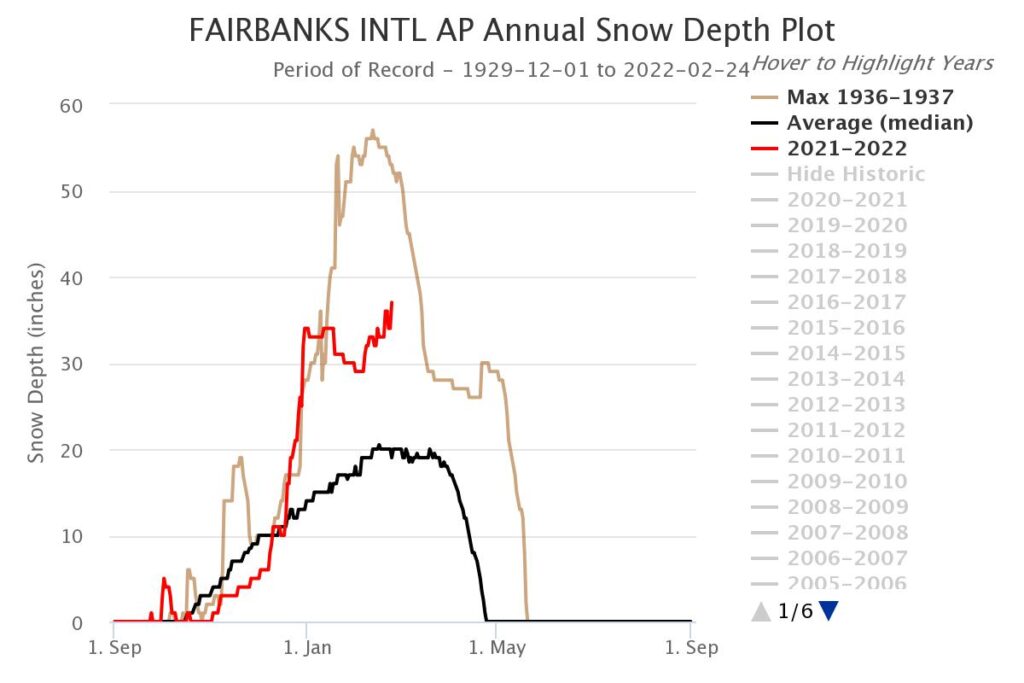In comparison, the Anchorage Climate Action plan is 108 pages long, whereas the Municipality of Anchorage Climate Action Strategy is just 12 pages. Greatest Snowfall in One Season: 171.6 inches - The greatest cumulative snow fall for Anchorage, Alaska. There is no online registration for the intro class Terms of usage & Conditions
border: 2px solid white;
The chance that a given day will be muggy in Anchorage is essentially constant during the winter, remaining around 0% throughout. Anchorage Temperatures: Averages by Month, Precipitation Averages for Places in Alaska. There are also monthly and yearly counts of the days that the northern city normally has heavy snowstorms and deep snow accumulated on the ground. Daily snow observations from GHCN stations are available using the pulldown menus below to select the state, month, and year of interest for either snowfall or snow depth data. to be a document for a broader audience of people so it is easier for them to understand what will go into these climate action plans.
};
This report illustrates the typical weather in Anchorage, based on a statistical analysis of historical hourly weather reports and model reconstructions from January 1, 1980 to December 31, 2016.
content: function() {
 $( "#tabs" ).tabs();
The months with the least snowfall days are June, July and August (0 days). var wpcf7 = {"api":{"root":"https:\/\/akclimate.org\/wp-json\/","namespace":"contact-form-7\/v1"},"cached":"1"}; Occasionally May also gets at least a dusting of snow.
$( "#tabs" ).tabs();
The months with the least snowfall days are June, July and August (0 days). var wpcf7 = {"api":{"root":"https:\/\/akclimate.org\/wp-json\/","namespace":"contact-form-7\/v1"},"cached":"1"}; Occasionally May also gets at least a dusting of snow.
Anchorage is located near a large body of water (e.g., ocean, sea, or large lake). window.backend = 1;
Sorry, the location you searched for was not found. return element.attr( "alt" );
$(function() {
Trends in temperature, precipitation, and daylight hours.
Anchorage, Alaska gets 17 inches of rain, on average, per year.  $( "#tabs" ).tabs();
The months with the least snowfall days are June, July and August (0 days). var wpcf7 = {"api":{"root":"https:\/\/akclimate.org\/wp-json\/","namespace":"contact-form-7\/v1"},"cached":"1"}; Occasionally May also gets at least a dusting of snow.
$( "#tabs" ).tabs();
The months with the least snowfall days are June, July and August (0 days). var wpcf7 = {"api":{"root":"https:\/\/akclimate.org\/wp-json\/","namespace":"contact-form-7\/v1"},"cached":"1"}; Occasionally May also gets at least a dusting of snow.